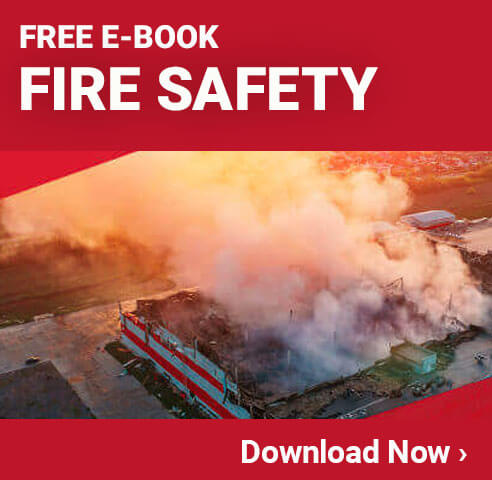Resources
Did you know a fire occurs in a structure every 63 seconds? Whole buildings can burn in a matter of minutes causing irreparable damage and, in some cases, multiple fatalities. Fire safety is everyone's job at a worksite, and it's a job that can never be taken too seriously.
Workers should be trained to identify fire hazards and what they need to do in the case of a fire. Fire safety in the workplace covers prevention efforts, hazard control, and measures to reduce the destruction caused by fire, and there are common elements among fire safety programs:
- Fire Protection & Prevention Equipment: Facilities need to have the right equipment on hand: fire extinguishers, fire suppression systems, emergency lighting, etc., and this equipment must be inspected and maintained.
- Fire Safety Plan: Buildings must have an approved fire safety plan that includes key contact information, access issues, sprinkler system connections, and other pertinent information.
- Emergency Evacuation: Organizations must provide the proper routes of egress for their employees. In the case of a fire, employees should be able to quickly locate the emergency exit route and proceed to a safe area.
- Compliance: In addition to meeting OSHA standards for emergency planning and fire safety, businesses will need to check their building is compliant with all local and regional fire codes.
- Electrical Safety: As one of the top causes of occupational fires, all electrical hazards in a facility must be adequately controlled. It's important to check faulty wiring and ensure all electrical equipment is functioning properly.
Fire safety isn't always easy to address; fires can be caused by a number of things (chemicals, electricity, negligence, etc.), safety requirements are regulated by different agencies and departments (OSHA, NFPA, local departments, etc.), and fire safety covers everything from prevention to response. Creative Safety Supply is dedicated to helping companies keep their employees safe and their workspaces compliant. Below we have gathered our expert resources on all things fire safety. We're here to help.
Getting Started
- Confused with industry jargon? Check out our safety glossary.
- Want to learn more about safety? Explore our workplace safety resources.
- Have a question about fire safety? Browse our fire safety Q&A hub.
- Ready to get started? Shop our selection of fire safety supplies.
Fire Safety Articles
NFPA 25: Standards for Fire Protection Systems
Learn about the updates made to NFPA 25 in 2020 as well as the essential components of fire protection and prevention systems that keep employees safe. …
Preparing the Workplace with Emergency Action Plans (EAP)
An emergency action plan is a written document required by OSHA that details procedures carried out by employees during the event of an emergency. …
Fire Safety in the Workplace
Fire safety is essential in every workplace. These are the principles that will help your facility prepare for fires and prevent them from occurring in the first place. …
National Electrical Code (NEC)
The National Electrical Code (NEC) is the ANSI/NFPA-approved standard for safe electrical installation. The NEC is revised once every three years, with the most recent changes in 2017. …
NFPA 99: Understanding the Health Care Facilities Code
NFPA 99 standards are built specifically to ensure safety from fire danger in healthcare facilities. Learn how to stay in compliance and protect your facility from fire hazards with this overview of the NFPA 99. …
Electric Arc [Definition, Applications & Arc Flash]
Electrical arcs can be a serious hazard when not intended. When an electric arc is created in an uncontrolled environment, such as an arc flash, serious injury or death can occur. Learn more... …
What is a thermal printer? (direct transfer)
Thermal printers are essential to printing in an industrial setting. Learn about the two types of thermal printing to determine which one suits your facility’s needs. …
Floor Marking for Fire Extinguishers
Use floor markings to make sure you can find the fire extinguisher and that it is not blocked in an emergency. …
Fire Prevention in the Workplace [OSHA 1910.39]
Fire prevention safety is important for all employees and workplaces. This article explains fire prevention standards and provides helpful tips. …
Arc Flash and Electrical Safety
Learn how arc flash works and how it relates to your larger electrical safety program. …
10 Essential Steps for Electrical Safety
Follow these 10 steps to protect people and property from electrical hazards. …
Arc Flash Software helps improve Arc Flash Safety
A review of common software programs that will help you reduce arc flash hazards. …
Arc Flash [Facts, Safety Requirements & PPE]
Arc flash can cause serious damage to people and property. Learn how arc flash works and how you can prevent it. …
Fire Safety Questions and Answers
What is an example of a fire hazard audit?
Fire hazard audits, more popularly known as fire safety audits, focus on examining the area for problems that may impede fire safety. This means checking to make sure the organization is code compliant with fire protection regulations that take care of fire alarms, sprinkler systems, firefighting equipment, emergency protocol, etc. These audits usually focus on questions… …
Are flammable or combustible liquids hazardous to human health?
The short answer to this question is yes, both flammable and combustible liquids are hazardous to the health of humans due to the high possibility of igniting a fire or initiating an explosion. There can be other dangers associated with these chemicals as well if they are breathed in, ingested, or splashed onto the skin… …
What are flammable and combustible liquids?
Many people assume flammable and combustible mean the same thing; however, they are strikingly different. These terms are used to describe the conditions in which dangerous liquids are likely to ignite. What’s even more interesting is that it’s not the liquid that burns, it’s instead the vapors caused by evaporation that ignite. The National Fire Protection… …
What are flammable or explosive limits?
Flammable or explosive materials are incredibly dangerous to workers. On top of that, these materials can exist in almost any environment whether that be in the construction industry, manufacturing, or in a commercial kitchen. There are some jobs that pose a higher risk of encountering these hazardous substances than others. Those whose job it is to… …
How are flammable and combustible materials an explosion hazard?
Flammable and combustible materials achieve explosive tendencies depending on two factors: the concentration of vapors or particles suspended in air as well as the presence of an ignition source, whether that be heat or a spark. However, the terms flammable and combustible are often used interchangeably when, in fact, there are some significant differences between the… …
What should be included in a fire safety plan?
Workplaces must have develop a written fire safety plan that essentially covers all of the procedures, systems, and actions that managers and employees must take in the event of a fire. Also known as fire prevention plans, it's important workers not only are aware of the plan, but are also trained on safety procedures to… …
What are some examples of fire protection measures?
Fires have the potential to be one of the most devastating events in the workplace if the right safety measures are in place. Implementing or installing standard fire protection systems is important to reduce the growth rate of fire to prevent additional injuries and property damage. Measures for Fire Safety Below are recommendations to consider when reviewing… …
What is a fire prevention system?
It’s important for workplaces to safeguard employees and property with fire protection, prevention systems. Buildings have what is called ‘fire load’—a term fire protection professionals use when determining the potential severity of a fire in a building based on the presence of certain hazards—and fire prevention systems are put in place to keep a building’s… …
What should be included in fire safety training?
OSHA also encourages employers to train workers about potential fire hazards in the workplace and how to safely respond in the case of a fire emergency—everything from evacuation routes to using firefighting equipment. As part of OSHA’s standard for fire prevention plans, employers are required to inform employees of the fire hazards they will be exposed… …
What does AHJ stand for?
AHJ stands of the authority having jurisdiction. The AHJ is not a single entity. NFPA defines AHJ as “an organization, office, or individual responsible for enforcing the requirements of a code or standard, or for approving equipment, materials, an installation, or a procedure.” AHJs do not implement or publish new laws. Instead, the primary role… …
What is a flashpoint?
A flashpoint is the lowest temperature at which the vapors of a volatile material can ignite. This is an important factor when evaluating safety precautions in any area where flammable materials are used. In many factories great care must be taken to ensure the temperature never approaches the flashpoint of various materials or it could… …
What is a fire safety plan?
A fire safety plan is a strategy that is implemented in a facility that provides information about what to do to prevent fires, and how to respond should one occur. Of course, individual homes can also have fire safety plans, but when referring to the formal concept it is almost always going to be referencing… …
What does IFC stand for?
IFC stands for International Fire Code. The latest version is the IFC-2018, which serves to provide individuals and companies with the minimum level of safety guidelines for all new and existing structures. This set of standards also provides guidelines for processes on how things should be done to help reduce the risk of fires and… …
What does FR stand for?
When it comes to workplace safety, FR stands for flame resistant, or in some cases, flame retardant. These two terms are often used interchangeably, but they actually have two different, but related, meanings. Understanding what each of these phrases means, and how they should be used in the workplace, will help to improve overall safety. Flame… …
What does FR mean?
In the world of personal protection equipment and workplace safety, the acronym “FR” stands for either flame resistant or flame retardant. When specifically referring to FR clothing, it will mean flame resistant. These clothes were designed and specially treated in order to help keep them from catching fire, or remaining on fire, so that the… …
How can visual cues affect fire safety?
Visual communication is an extremely helpful tool for workplace fire safety. With the help of these tools, employees will be able to acknowledge and practice proper safety measures in the facility, strengthen the overall safety in the facility, and even improve emergency preparedness. Those outcomes should be high on the list of priorities within a… …
Is FR clothing considered PPE?
Personal protective equipment (PPE) consists of gear that an employee is required to wear depending on the work environment that he or she is in. To determine what kind of PPE is required in a particular workplace, a risk assessment must be completed. Employees may be required to wear hard hats, gloves, goggles, steel-toed boots,… …
Are fire alarms required by OSHA?
Fire alarms and detectors are essential to keeping employees safe in the workplace. Once alarms are set off, the occupants are alerted that a fire is present and subsequent action must be taken immediately. This can either be fighting the fire with fire protection equipment like fire extinguishers, or safely exiting the building. An emergency… …
Should fire drills be conducted?
OSHA does not require fire drills to be implemented at work, however they are highly encouraged and recommended. Even though fire drills may not be required by OSHA, they may well still be required by the state, local jurisdictions, or insurance providers to make sure there’s a safe evacuation plan for the building’s occupants. The frequency… …
Which fire extinguisher is used for electrical fire?
There are different types of fire extinguishers that are used for different kinds of fires and all of them are highly dependent on what kind of material is being burned. In the case of electrical fires, also known as energized electrical fires, a class C fire extinguisher is needed to put it out. If this… …
What colors should be used for fire related signs?
ANSI defines red as the color used for any safety signs or labels that signify danger, the color that marks fire protection equipment, and the color that indicates the need to stop. ANSI is not an institution that can enforce rules. The entity is merely a non-profit that supervises standards made for services, processes, produces,… …
Are fire sprinklers required?
Fire sprinklers are considered an active fire protection method because they directly fight fires in emergency situations. With more fire sprinkler systems being used today in various different buildings, rather than solely factories and large commercial buildings, the statistics show that 96% of fires have been controlled by sprinklers alone. There are a number of factors… …
How many fire extinguishers should a workplace have?
Fire extinguishers are essential in every building no matter what kind of work takes place there. When considering where they go and how many you need, the NFPA 10 regulation specifically states that fire extinguishers should be placed in spots that easily accessible and visible in case of an emergency. For example, they can be… …
Why is fire safety education and training important?
Fire safety education and training is not only required by law, it’s also an extremely important skill to obtain regarding the safety of employees and others who might be in the building. Fires are damaging to property, cause injury or death, and can even eliminate jobs since many buildings destroyed by fire are not rebuilt.… …
Who can give fire safety training?
Basic fire safety training is required by law for all employees in most workplaces. This includes warehouses, storage facilities, manufacturers of various materials etc. As for the question of who can administer that training, it falls on the shoulders of an individual who is seen as competent in fire safety. This is a person who… …
What is fire protection?
Fire protection refers to the steps that a company takes to prevent fires from becoming destructive to the point of requiring costly repairs. Whether these costs are seen as human injury and death or large amounts of property loss from an uncontrollable fire, each company should strive to invest in some sort of fire protection… …
What is a fire safety inspection?
The fire department is the entity that performs annual fire inspections. These inspections point out risks and hazards in the facility, which are noted at the end of a report to be remedied by employers. How this inspection is completed, when it is completed, and what it’s done for may vary depending on the city… …
What are fire risks in a factory?
The NFPA recorded around 499,000 structure fires in 2018. Compared to the 1,098,000 that were recorded in 1977 when the NFPA first began recording the amount of structure fires, this looks much better from an improvement standpoint. Out of those structural fires there were about 11,000 that were industry related. The property loss and damages… …
What are fire risks in an office?
According to 2017 statistics, there were around 18,000 fires that started in offices and stores resulting in 778 million dollars of property loss. The top five fire risks that exist in many offices can be avoided if the appropriate precautions are taken. Those five most common office fire risks are as follows: Overloaded electrical sockets This… …
What are fire risks in a warehouse?
Fire risks in warehouses cover much of the same concerns as industrial building fire risks except for the fact that warehouses often have a much higher possibility of potential fuel lying around. Warehouses currently are often larger than 10 football fields and store items on racks up to 100 feet tall. That is an enormous… …
How often should fire safety trainings be given?
Fire safety trainings should be given at least once a year, not only because everyone needs a refresher but also because fire safety certificates expire. Employers can go over fire safety and provide training when the workplace is the least busy so all the staff can participate. Fire safety training usually involves: Alarm systems Evacuation… …
What organization is involved with fire safety regulations?
The organization that is involved with fire safety regulations is the National Fire Protection Association (the NFPA). This group is an international non-profit organization that is devoted to helping eliminate fire and electrical hazards that most often result in death, property damage, and severe injury. About the NFPA Founded in 1896, the NFPA has published more than… …
What is a fire risk assessment?
A fire risk assessment is very similar to a normal risk assessment but it just focuses on fire safety instead of chemical and other physical hazards in the workplace. With a fire risk assessment, there must be one person who is responsible for keeping everything up to date. This includes ensuring the correct safety practices… …
What are fire safety regulations and standards?
There is a list of fire safety regulations made by the National Fire Protection Agency (NFPA) that exist to maintain safe conditions in the workplace. These regulations make a point that prevention is the first step against accidents that may involve fires. If every regulation is upheld there is a significant decrease in risk of… …
What fire safety equipment should I have in my facility?
One of the most important things OSHA focuses on is fire prevention in the workplace. Due to this, OSHA has a set of standards which help employers reduce the risk of fire and ensure employee safety (see section 1910.39 for fire safety compliance). A fire prevention plan is required if there is 10 or more… …

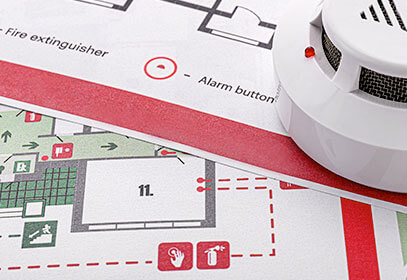
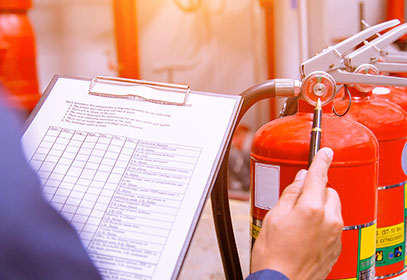

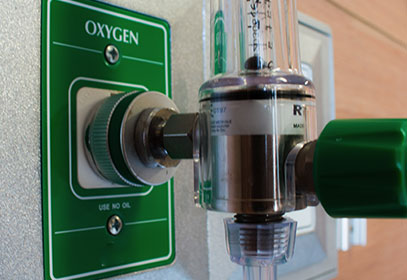
![Electric Arc [Definition, Applications & Arc Flash]](https://www.creativesafetysupply.com/content/images/articles/electrical-arc-th.jpg)
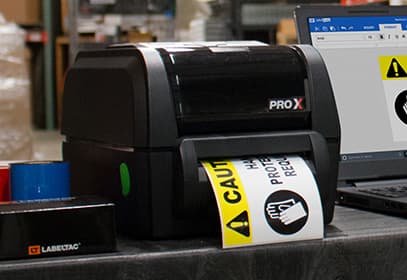


![Fire Prevention in the Workplace [OSHA 1910.39]](https://www.creativesafetysupply.com/template/images/custom/resources-page/articles-fire-prevention.jpg)
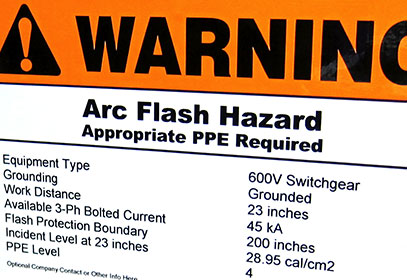

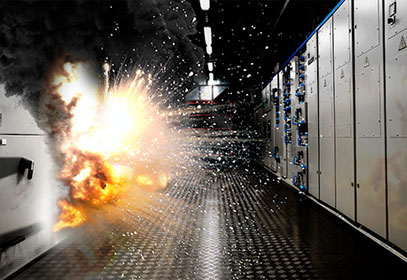
![Arc Flash [Facts, Safety Requirements & PPE]](https://www.creativesafetysupply.com/template/images/custom/safety-articles/articles-arc-flash-facts.jpg)
